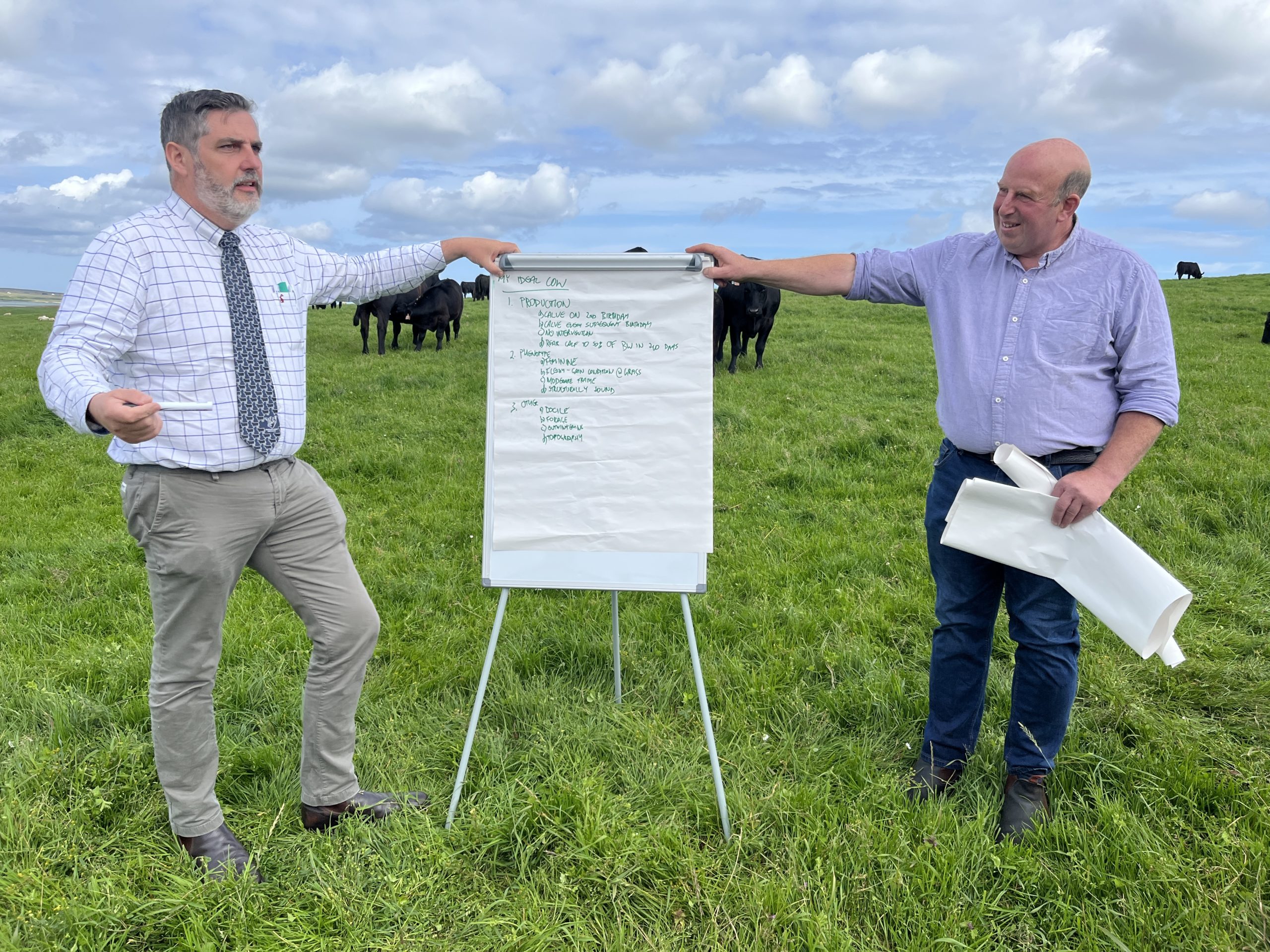Sustainable parasite control in sheep and cattle, selecting the best type of suckler cow and making the most of grass were key topics at the summer meeting of the Argyllshire Monitor Farm on Islay.
One of nine Monitor Farms across Scotland, Craig and Petra Archibald and family farm at Craigens Farm, a 4,950 acre tenanted unit. They have 220 suckler cows and 200-220 calves, as well as 1,000 ewes and 1,000-1,200 lambs. The farm focusses on producing Angus and Charolais yearling calves for the store market and fat lambs.
In addition to the livestock, the farm has 50 acres producing barley grown for a local distillery and 25 acres of forage rape. Geese grazing places the farm under heavy pressure during winter and Craigens Farm is in Goose Management Schemes.
The aim of the Monitor Farm Scotland programme is to help to farms reach full economic, social, and environmental sustainability by optimising production. Over the next four years, other farmers and experts will be brought together to help the Archibalds assess the farm’s performance, explore opportunities, and develop solutions to the challenges they face.
Speaking at the summer meeting six months on from the initial launch, Craig explained that during that time the farm’s soils had been sampled and analysed by SoilEssentials, while SAC Consulting was carrying out an Integrated Land Management Plan on the farm to set a baseline and look at opportunities. The business was also going to embark on two specialist plans as a result – one on the sheep system, the other on sustainable parasite control.
He said: “It’s great to be part of the Monitor Farm Programme, and although it has been challenging to gather all the information required for the Integrated Land Management Plans, it has resulted in the two specialist plans which will help us focus on those areas to assess and make changes where we can.”
The farm is already seeking to reduce routine wormer use as part of a more sustainable approach to parasite control, said Craig. “After the last Monitor Farm Management Group meeting we took dung samples for the calves, ranging from two to six weeks old. The samples tested positive for Coccidia, so on advice from our vet we treated for the Coccidia and missed out the wormer as the samples only had a slight worm burden.”
While dung sampling as part of sustainable parasite control for cattle and sheep will reduce resistance and costs, the logistics of being on an island make it difficult due to the time lag between testing and getting treatments brought over. For instance, for many flocks, including those at Craigens, it is not always easy to re-gather to dose, he said.
Visitors also heard how Craig has focussed on breeding a good cow for the farm after changing from being a dairy farm to running sucklers around 20 years ago. Speaking at the meeting about selecting the ideal sucker cow, beef specialist Robert Gilchrist, chief executive of the Aberdeen Angus Society, had three take-home messages.
“It’s quite simple. There is a core piece that runs over it all – it’s profit and having a cow that is profitable. You’re looking for a productive cow that drops her first calf on her second birthday and a calf every birthday after that, all the way up to be 10-12 years old, though after that you do see production dropping. You’re looking for her to be having no intervention at calving and to rear that calf through to 50% of her body weight.
“Second is cow type; you’re looking for something that’s feminine, fleshy with a moderate frame and structurally sound.
“Finally for my ideal suckler cow, you’re looking for something that is docile and does well on forage. The whole thing that overarches that is that it fits the farm – make the animal fit the farm, rather the farm fit the animal. You can find a lot of information [about your cows] in the data you have, so go have a dig around and see what you can find.”
Visitors also heard about the family’s continued focus on grass types and management to lessen the impact of goose grazing. Speaking at the meeting, grass specialist Pat Lambert from Watson Seeds said soil fertility and pH was ‘absolutely fundamental’. “You will get the biggest return by getting your pH up to the right level as everything else will come together, so, for instance, phosphate and other minerals will become more available. Get your fertility right, and the grasses will perform for you.”
Using and managing grass so it’s at the correct stage is also essential, he said. “If you can graze grass at the correct stage, cut it at the correct stage, you’re dealing with much higher metabolizable energy (ME). Higher MEs mean higher digestibility, better utilisation and your stock will perform better.
“My third message would be, don’t be afraid of diversity within your mixtures. So Cocksfoot grass can do a job for managing the geese impact because it’s tough and very deep rooting.” Thinking about other deep rooting species such as fescues, Timothy and herbs which will fit into grazing systems will help boost mineral levels, he said.
Speaking after the meeting, Monitor Farm regional adviser Christine Cuthbertson said: “There was great engagement at the meeting, and that’s down to Craig and the team at Craigens being so open and honest about their challenges and sharing in their solutions as the farming climate continues to change.
“Robert Gilchrist and Pat Lambert gave everyone a lot to think about, and it was also good to hear Jenny Love from SAC highlighting the various funded options available to farmers and crofters to support good practical farm tools such as soil sampling and livestock health interventions. We were delighted to have RSABI with us on the day too.”
For further information on each Monitor Farm visit www.monitorfarms.co.uk or contact Christine on 07769 366671 or email monitorfarm@qmscotland.co.uk

